#kochi machiko
Explore tagged Tumblr posts
Text
What’s In a Book? Part 29
While going through my collection I managed to find a few books that have yet to be featured on here yet. I decided to go with this one as, upon further review, I noticed that it actually contained a wealth of information that I had previously ignored ^^;
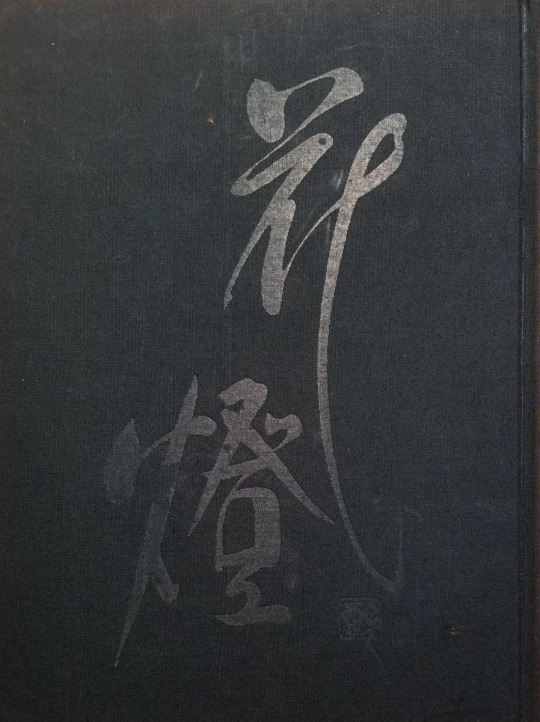
Image of book’s cover courtesy of myself. Hana Akari: Showa Meigiren (はなあかり: 昭和名妓連) - Brilliant Flowers: The Showa Period’s Finest Geisha by Kobunshi Katsura (桂小���枝) (ISBN Unknown). Date of Publication: 1988 Language: Japanese and English (Some Essays and Names Only) Format: Hardcover Availability: Can be found up for auction on a fairly regular basis Price: Anywhere from $30 - $80 Errors: 0 This book is interesting, and that’s putting it mildly. Basically, it provides us with some of the best raw data for its time: The names of the most prominent geisha in each district of each city across all of Japan. It is a literal who’s who guide to the karyukai across the country in the late 1980s and is illuminating both in small essays that can be found at the front and back of the book explaining various schools and styles, but especially because it provides us with images, most in full color, of these amazing women. The book overall is divided into regions which are then broken down further from there. The regions, cities, and districts of each named geisha are: Part 1: Hokkaido (北海道) Set 1: Asahikawa (旭川) - Kofune (小舟) Set 2: Sapporo (札幌) - Onobu (お信), Itoko (い登子), Izumi (いづみ), and Charako (茶良子) Set 3: Otaru (小樽) - Komomo (小桃), Mametarō (豆太郎), Kiku (㐂久), and Gorō (吾朗) Set 4: Muroran (室蘭) - Chonko (﹅子) Set 5: Hakodate (函館) - Nantoki (喃登希) and Kohide (小ひで) Part 2: Tohoku (東北) Set 1: Morioka (盛岡) - Tsutamaru (都多丸) Set 2: Hanamaki (花巻) - Kimiko (君子) and Keiko (桂子) Set 3: Aomori (青森) - Chame (茶目) Set 4: Yamagata (山形) - Kochō (小蝶) and Kinta (金太) Set 5: Akita (秋田) - Chiyogiku (千代菊) Set 6: Obara (小原) - Ikkyū (一休), Aki (秋), and Kogiku (小菊) Set 7: Fukushima (福島) - Sakura (さくら) and Hidemi (秀美) Part 3: Kanto (関東) Set 1: Takasaki (高崎) - Kiyoko (清子) Set 2: Kusatsu (草津) - Sankoma (三駒) and Harumi (春美) Set 3: Sarugakyo (猿ヶ京) - Kikutaro (菊太郎), Koshizu (小静) Set 4: Minakami (水上) - Yutaka (ゆたか) Set 5: Oyama (大山) - Kunika (くに香) Set 6: Tokyo (東京) - Fumie (冨美江) and Wakaryū (若龍) Set 7: Yugawara (湯河原) - Okame (お加目), Matsue (松栄), and Taeko (多恵子) Part 4: Chubu (中部) Set 1: Niigata (新潟) - Chiyogiku (千代菊) Set 2: Takada (高田) - Kazuko (加津子) Set 3: Shibata (新発田) - Renko (れん子) Set 4: Kamidayamadatogura (上山田戸倉) - Senryū (泉竜), Suzuyakko (鈴奴), Saizō (才三), and Utamaru (歌丸) Set 5: Kamisuwa (上諏訪) - Chiyomaru (千代丸) Set 6: Isawa (石和) - Miki (美樹) and Koyakko (小奴) Set 7: Kōfu (甲府) - Misako (美佐子), Kimika (君香), and Hisayo (久代) Set 8: Inuyama (犬山) - Misako (みさ子) Set 9: Hamamatsu (浜松) - Gonza (権三), Ichitarō (市太郎), Otomi (乙美), Koman (小萬), Eiko (栄子), Hatsutarō (初太郎), Tsuruchiyo (鶴千代), Yasuyo (泰世), Sakura (佐久良), Sachiko (幸子), Toshie (利枝), Komomo (小百々), Momoko (百々子), Fumiya (二三弥), Mitsugiku (光菊), Azuma (吾妻), Akiko (明子), and Ichiha (市羽) Set 10: Kanazawa Higashi/East (金沢東) - Koman (小まん) Set 11: Kanazawa Kazuemachi (金沢主計町) - Hitoha (一葉) and Kyōko (京子) Set 12: Kanazawa Nishi/West (金沢西) - Mineko (峯子), Sachiyo (幸代), and Marichiyo (まり千代) Set 13: Fukui (福井) - Makiko (真㐂子) and Yurako (由良子) Set 14: Yuzawa (湯沢) - Katsumaru (勝丸) and Hiromi (弘美) Set 15: Nagoya (名古屋) - Fukuchiyo (福千代), Takako (敬子), Tsuruko (つる子), Mitsuyo (光代), Kiku (喜久), Emiya (英美弥), Sanchō (三長), Satoyo (里代), Mitsu (未津), Ayako (あや子), Kinmaru (金丸), Naoe (直枝), Fukuwaka (福若), Hisae (比三枝), Mako (間子), Yasuko (康子), Toshino (とし乃), Koie (鯉恵), Mariko (まり子), Katsuko (かつ子), Maiko (舞子), Kingyo (金漁), Hideka (秀佳), Chiyoe (千代江), and Motoko (素子) Part 5: Kinki (近畿) Set 1: Osaka (大阪) Part A: Osaka Minami (大阪南) - Yukiharu (雪春), Kikutsuru (菊つる), Kikue (菊恵), Rikimaru (力丸), Kinko (きん子), Yukiji (ゆき路), Kōjirō (廣二郎), Yoshiko (よし子), Terugiku (照菊), Midori (美登利), Hankō (はん幸), Kazumi (かず美), Yukie (ゆき恵), Yūka (勇花), Suzuka (鈴佳), Masako (まさ子), Fukuemi (福笑), Masachiyo (政千代), Kikufumi (菊二三), and Yūko (祐子). Part B: Osaka Horie (大阪堀江) - Temari (てまり) Part C: Osaka Shinmachi (大阪新町) - Hatsuko (はつ子) and Tamao (玉緒) Part D: Osaka Kitashinchi (大阪北新地) - Komaka (駒香), Umesada (梅さだ), Umetomi (梅十三), Suzume (寿々女), and Umemitsu (梅充). Set 2: Kyoto (京都) Part A: Gion Kobu (祇園甲部) - Komame (小まめ), Hisae (久栄), Katsuyū (かつ勇), Haruyū (春勇), Miyokazu (美代一), Fukusono (フク園), Satoharu (��春), Yoshigiku (義㐂久), Kōsono (晃園), Teruha (照葉), Mamekō (まめ晃), Fukuyū (福勇), Kanoko (かの子), Machiko (真知子), Kumiko (玖見子), Kohana (子花), Takayū (孝友), Teruchiyo (照千代), Takeha (竹葉), Nakako (奈加子), Mameyū (まめ勇), Sonoko (その子), Tomichiyo (斗美千代), Yoshimame (芳豆), Kofumi (小富美), Kanoju (かの寿), Mamechiyo (豆千代), Katsufuku (かつ福), Mameji (豆爾), Toyochiyo (豊千代), Katsuji (佳つ二), Ichigiku (市季久), Mamezuru (まめ鶴), Koman (小萬), Michiko (道子), Miyokichi (美与吉), Aika (愛香), Teruyo (照代), Fumichiyo (富美千代), Kikuharu (菊春), Masuko (ます子), Momoko (桃子), Kosode (小袖), Chōji (長治), Tomigiku (冨菊), Komasu (小ます), Emiji (恵美二), Dan-e (だん栄), Koyū (小ゆう), Yukiryō (幸良), Hanachiyo (花千代), Miyuki (美ゆき), Masaru (勝), Kanoji (かの次), Hiromi (廣美), Kotomi (小とみ), and Ainosuke (愛之介). Part B: Pontocho (先斗町) - Miyofuku (美代福), Hisakō (久幸), Raiha (来葉), Momiha (もみ葉), Ichiko (市子), Shinatomi (シナ富), Mameharu (豆治), Hisafumi (久富美), Ichisen (市扇), Mameyuki (豆幸), Umeyū (梅佑), Ichitoyo (市豊), Mameshizu (豆志津), Ichisono (市園), Mamechiyo (豆千代), Hisaroku (久ろく), Ichimitsu (市光), Momizuru (もみ鶴), Hide-e (英江), Tomizuru (富鶴), Emiju (笑寿), Fudeya (フデ哉), Miyosaku (ミヨ作), Ichihiro (市宏), and Shinateru (シナ照). Part C: Gion Higashi (祇園東) - Toyoji (豊治), Fumie (章栄), Chika (ちか), Tsurukazu (つる和), Tsunekazu (つね和), Tsunehisa (つね久), Masuko (ます子), Toyohisa (豊寿), and Masako (満佐子). Part D: Miyagawa Cho (宮川町) - Wakaharu (若晴). Kanae (叶恵), Fumichō (富美蝶), Mikiryū (三木竜), Wakachika (若千加), Fukukazu (ふく和), Toshiyū (敏祐), Suzuchiyo (鈴千代), Hinachō (雛蝶), Chikayoshi (千賀俊), Mieko (美恵子), Fukusome (冨久染), Tane-e (種栄), and Tanekazu (たね和). Part E: Kamishichiken (上七軒) - Tei (てい), Emi (恵美), Katsukiyo (勝㐂代), Tamafuku (玉福), Fukuzuru (福鶴), Hisazuru (久鶴), Tsuruzō (鶴三), Hisawaka (久若), Tamaryō (玉龍), Shimeyo (〆代), Katsumaru (勝丸), Naoko (尚子), Kokimi (小㐂美), and Kohan (小はん). Set 3: Nara (奈良) - Suzumi (須寿美) Set 4: Genrō (彦桹) - Kikuyū (菊勇) and Masaya (政弥). Set 5: Otsu (大津) - Omasa (おまさ) Set 6: Kinosaki (城崎) - Tomiyū (富勇) and Kanoko (佳乃子) Set 7: Wakayama (和歌山) - Kikuchiyo (菊千代) Set 8: Shirahama (白浜) - Tsutagiku (蔦菊) Set 9: Osaka Imasato (大阪今里) - Koito (小糸) and Kichihide (吉秀) Set 10: Imasato (今里) - Kichitama (吉玉) Set 11: Kyoto Shimabara (京都島原) - Hana Ōgi Tayū (花扇太夫) Part 6: Chūgoku (���国) and Shikoku (四国) Set 1: Tamatsukuri (玉造) - Naoko (尚子), Yae (八重), and Kishi (貴志). Set 2: Okayama (岡山) - Yakko (奴) and Chizu (知寿) Set 3: Takamatsu (高松) - Hamachiyo (浜千代) Set 4: Matsuyama (松山) - Ippei (一平) Set 5: Tokushima (徳島) - Fukuyo (福代) and Akiyo (明代) Set 6: Kochi (高知) - Kimiryū (君龍) and Sadamaru (貞丸) Part 7: Kyushu (九州) Set 1: Hakata (博多) - Mieko (美恵子) Set 2: Kurume (久留米) - Okiyo (お清) Set 3: Ureshino (嬉野) - Hisamatsu (久松), Komatsu (小松), Koshin (小新), Hisaryū (久竜), and Marikō (まり幸). Set 4: Isao (武雄) - Fumiya (文弥) Set 5: Beppu (別府) - Mitsugiku (光菊), Fujikatsu (ふじ勝), Umesono (梅園), and Tomiko (富子) Set 6: Kumamoto (熊本) - Ayako (あや子) Set 7: Kagoshima (鹿児島) - Aimaru (愛丸) The only areas that I noted are missing are some of the hot springs towns. I’m not too sure why they were skipped over, but it’s possible that the author did not have any connections to them. The most informative part that I admit I skipped initially is the small print under each geisha’s name: their natori specialty, natori teachers, and natori names. This means that we can trace back what schools were the main specialty of each region going back decades. Since this is invaluable for anyone studying geisha over time, I’ll write in what schools were followed, but I will keep names a secret. Districts are as follows: Part 1: Hokkaido (北海道) Set 1 Asahikawa (旭川) - Kineya (杵屋) Set 2: Sapporo (札幌) - Wakayagi (若柳) for dance and Tadeko (蓼胡) for song Set 3: Otaru (小樽) - Fujima (藤間) for dance and Tadeko (蓼胡), Kineya (杵屋), Kiyomoto (清元), Shunnichi (春日), and Tokiwazu (常磐津) for song. Set 4: Muroran (室蘭) - None Given Set 5: Hakodate (函館) - Tanaka (田中) for dance and Matsunaga (松永) for song. Part 2: Tohoku (東北) Set 1: Morioka (盛岡) - Tokiwazu (常磐津) for song. Set 2: Hanamaki (花巻) - Wakayagi (若柳) for dance and Kineya (杵屋) for song. Set 3: Aomori (青森) - None Given. Set 4: Yamagata (山形) - Fujima (藤間) for dance. Set 5: Akita (秋田) - None Given. Set 6: Obara (小原) - None Given Set 7: Fukushima (福島) - None Given. Part 3: Kanto (関東) Set 1: Takasaki (高崎) - Hanayagi (花柳) for dance and Okayasu (岡安) for song. Set 2: Kusatsu (草津) - Hanayagi (花柳) for dance. Set 3: Sarugakyo (猿ヶ京) - Kineya (杵屋) for song. Set 4: Minakami (水上) - Kineya (杵屋) for song. Set 5: Oyama (大山) - Kineya (杵屋) Set 6: Tokyo (東京) - Taguchiko (田口湖) for dance and Kineya (杵屋) for song. Set 7: Yugawara (湯河原) - Tanaka (田中) and Fujima (藤間) for dance and Tokiwazu (常磐津), Kineya (杵屋), and Tadeai (蓼相) for song. Part 4: Chubu (中部) Set 1: Niigata (新潟) - None Given. Set 2: Takada (高田) - None Given. Set 3: Shibata (新発田) - Okayasu (岡安) for song. Set 4: Kamidayamadatogura (上山田戸倉) - Bandō (坂東) for dance and Tōsha (藤舎), Shunnichi (春日), Kineya (杵屋), and Kiyomoto (清元) for song. Set 5: Kamisuwa (上諏訪) - Kineya (杵屋) for song. Set 6: Isawa (石和) - Hanayagi (花柳) for dance and Mochizuki (望月) for song. Set 7: Kōfu (甲府) - Hanayagi (花柳) for dance and Kiyomoto (清元), Okayasu (岡安), and Nagami (長巳) for song. Set 8: Inuyama (犬山) - Nishikawa (西川) for dance and Kineya (杵屋) for song. Set 9: Hamamatsu (浜松) - Fujima (藤間) and Fukuwara (福原) for dance and Kiyomoto (清元), Yoshimura (芳村), Shunnichi (春日), Nishikiharu (錦春), and Tokiwazu (常磐津) for song. Set 10: Kanazawa East (金沢東) - Kamizaki (神崎) for dance. Set 11: Kanazawa Kazuemachi (金沢主計町) - Fujima (藤間) for dance and Kineya (杵屋) and Mochizuki (望月) for song. Set 12: Kanazawa Nishi/West (金沢西) - Nishikawa (西川) for dance and Tōsha (藤舎), Okayasu (岡安), and Kashida (堅田) for song. Set 13: Fukui (福井) - Fujima (藤間) for dance and Utazawa (哥沢) for song. Set 14: Yuzawa (湯沢) - None Given. Set 15: Nagoya (名古屋) - Nishikawa (西川) for dance and Kiyomoto (清元), Tokiwazu (常磐津), Sumida (住田), Kineya (杵屋), Kishizawa (岸沢), Shunnichi (春日), and Fujimatsu (ふじ松) for song. Part 5: Kinki (近畿) Set 1: Osaka (大阪) Part A: Osaka Minami (大阪南) - Onoe (尾上), Fujima (藤間), Bandō (坂東), and Hanayagi (花柳) for dance and Kiyomoto (清元), Kondo (今藤), Mochizuki (望月) and Tokiwazu (常磐津) for song. Part B: Osaka Horie (大阪堀江) - Nishikawa (西川) for dance. Part C: Osaka Shinmachi (大阪新町) - Nishikawa (西川) for dance and Kineya (杵屋), Shunnichi (春日), and Ogie (荻江) for song. Part D: Osaka Kitashinchi (大阪北新地) - Nishikawa (西川) and Hanayagi (花柳) for dance and Kineya (杵屋), Tamura (田村), Uji (宇治), Tokiwazu (常磐津), Tagawa (田川), Kiyomoto (清元), and Yoshimura (吉村) for song. Set 2: Kyoto (京都) Part A: Gion Kobu (祇園甲部) - Inoue (井上) for dance. Part B: Pontocho (先斗町) - Onoe (尾上), Nishikawa (西川), and Wakayagi (若柳) for dance and Tōsha (藤舎), Kondo (今藤), Nakamura (中村), Ogie (荻江), Bungo (豊後), Kineya (杵屋), and Tokiwazu (常磐津) for song. Part C: Gion Higashi (祇園東) - Fujima (藤間) for dance and Tokiwazu (常磐津), Yanagi (柳), Nakamura (中村), Kineya (杵屋), and Tōsha (藤舎) for song. Part D: Miyagawa Cho (宮川町) - Umemoto (楳茂都), Wakayagi (若柳), and Rokugō (六鄕) for dance and Kondo (今藤), Bungo (豊後), Kiyomoto (清元), Yanagi (柳), Yamakishi (山岸), Utazawa (哥沢), Tadeko (蓼胡), and Umeya (梅屋) for song. Part E: Kamishichiken (上七軒) - Hanayagi (花柳) for dance and Tokiwazu (常磐津), Shunnichi (春日), Toyomoto (豊本), Kiyomoto (清元), Tōsha (藤舎), and Kiyoyuki (清之) for song. Set 3: Nara (奈良) - Kineya (杵屋) for song. Set 4: Hikone (彦桹) - None Given. Set 5: Otsu (大津) - Yanagi (柳) for song. Set 6: Kinosaki (城崎) - Wakayagi (若柳) and Onoe (尾上) for dance. Set 7: Wakayama (和歌山) - Onoe (尾上) for dance. Set 8: Shirahama (白浜) - Okayasu (岡安) for song. Set 9: Osaka Imasato (大阪今里) - Kineya (杵屋), Shunnichi (春日), and Kiyomoto (清元) for song. Set 10: Imasato (今里) - None Given. Set 11: Kyoto Shimabara (京都島原) - None Given. Part 6: Chūgoku (中国) and Shikoku (四国) Set 1: Tamatsukuri (玉造) - Fujima (藤間) for dance and Kineya (杵屋) for song. Set 2: Okayama (岡山) - Onishi (小西) for dance. Set 3: Takamatsu (高松) - Kiyomoto (清元) for song. Set 4: Matsuyama (松山) - Kiyomoto (清元) and Tamura (田村) for song. Set 5: Tokushima (徳島) - Yoshitō (芳膛) for dance and Kiyomoto (清元) and Tamura (田村) for song. Set 6: Kochi (高知) - Kiyomoto (清元) and Tamura (田村) for song. Part 7: Kyushu (九州) Set 1: Hakata (博多) - Kondo (今藤), Shunnichi (春日), and Kashida (堅田) for song. Set 2: Kurume (久留米) - Tokiwazu and Shunnichi (春日) for song. Set 3: Ureshino (嬉野) - Hanayagi (花柳) and Fujima (藤間) for dance and Matsunaga (松永) and Tagoto (田毎) for song. Set 4: Isao (武雄) - Fujima (藤間) for dance. Set 5: Beppu (別府) - Tokiwazu (常磐津), Kiyomoto (清元), and Hisago (瓢) for song. Set 6: Kumamoto (熊本) - Hanayagi (花柳) for dance and Kondo (今藤) for song. Set 7: Kagoshima (鹿児島) - Kineya (杵屋) and Tagoto (田毎) for song. The reason why this book has no ISBN is because it was self published. The original cover price was ¥30,000, which is almost $300 USD. This price was likely set due to the vast amount of research done, including acquiring the many photographs, and printing costs. This price was also likely due to it being targeted at serious karyukai connoisseurs as that price in the 1980s would have been much higher now due to inflation. Nowadays you don’t have to pay as much for this book as most Japanese sellers see it as outdated and it can be found quite regularly on Japanese retail sites, such as Yahoo Japan Auctions or Rakuten. The only “errors: that I could find were some spelling issues, but that’s because they’re using the Japanese way of writing Romaji and not the Hepburn System. So, I’m not counting them as errors, but rather just making note of them to anyone who purchases this book. Rating: ✪✪✪✪ (out of 5)
35 notes
·
View notes
Photo
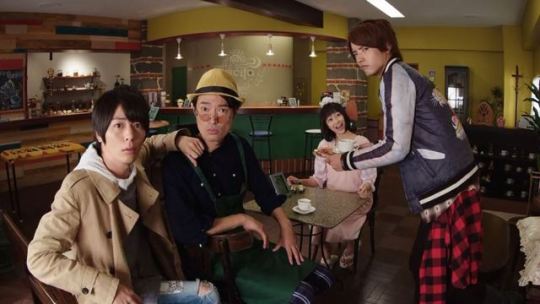
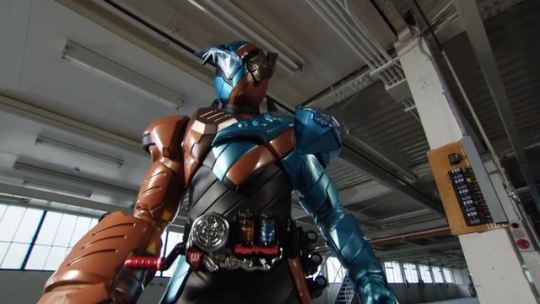


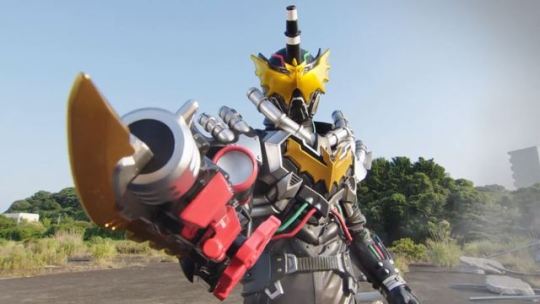
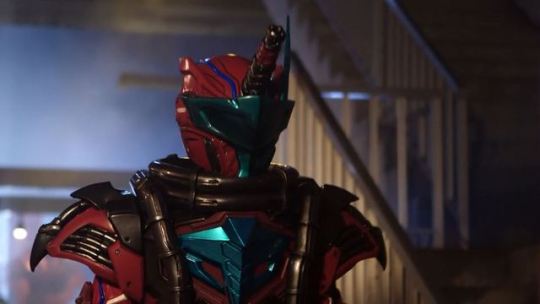
My interest is definitely building up for Kamen Rider Build...
As I have stated before, I'll be recap-viewing the new episodes in batch post. For this occassion, I'll be covering episode 02 to 04! Here goes...
02 - "The Love and Life that's Lost"
- After several replays, I can now admit that the opening theme song does remind me of "Kamen Rider Blade" and "Kamen Rider 555". And also a bit of "Kamen Rider W" and "Kamen Rider OOO". Just to be fair, I'm still not too keen on it, but it's definitely a standard Kamen Rider song. - This episode proved that Sentou is a much likeable protagonist when he's being serious. His confidence, deduction (albeit not so scientific), and compassion for Ryuuga's situation added actual charm to his character. At the same time, the others got their share to shine as well, particularly, the ladies! Episode 1 only showcased a very thin imagery of either Misora and Sawa, so I was really glad that we got to see more of these two. They unexpectedly added more (and much needed?) spark to the show. Misora's "I don't give a crap" attitude for example, was enough to make me feel curious about what's really going on with her powers. Sawa still served as plot-driver, but at least her inclusion as part of the team worked naturally. Well, sort of. She just casually walked in to their secret HQ, so the others couldn't really say no! LOL. Even Souichi wasn't as annoying as usual, and actually imbued the episode with an amazing 'WHAT THE HELIUM' moment that literally made me jump out of my bed seat. Dang it, this guy has SECRETS... - I wasn't too fond on the action this time around. Gorilla/Diamond's Dazzling Destroyer GORILLAMOND form looked... nice. A little heavy on the right arm, but still nice. And we got more motorcycle chase. Must the troops combined themselves into the infamous low-quality CG giant though? *sigh*. Oh well, at least the science thingy (using Ryuuga as bait to catapult Build)... made more sense than that weird 'Rider-Kick'. - The episode also truly capitalized on Eiji Aso's emotional talent, one that he has proven through "Kamen Rider Amazons S2". Unfortunately, this was also the part that felt... a little over-dramatic and overly-done. I mean, did the show really need to kill Ryuuga's... uhm, girlfriend (it's implied that way, but he never explicitly called her that) Kasumi Ogura (played by Risako Itou) so early in the show? That's a combination of dark and harsh! I know that Tokusatsu generally avoids romantic angle to its protagonists, so it's not a surprise. This one served to add shadows of doubts to Ryuuga too. But, was it really necessary? Shouldn't audience be given the chance to know more of her, to get emotionally invested, so the death scene had more impact? This felt rushed, so it's hard to sympathize with Ryuuga's loss. Oh well, I guess her sole importance was to 'produce' the Dragon Full Bottle for Ryuuga. As in, his next step towards becoming Kamen Rider Claws. - Speaking of girlfriend, dang it with all those yaoi teases!!! Sentou was even shown to be genuinely surprised that Ryuuga has a 'girl'-friend. These two needs to get a room. Oh wait a sec... they are, huh? Along with everyone else. After all, the secret HQ only has ONE small bed that we've seen being used by Sentou, Misora. Ryuuga probably slept there too now!!! LOL. - Bat-man himself, the elusive Night Rogue made his presence known! The way he dealt with Kasumi... showed what a ruthless fella he could be. Interestingly, if Build was using liquid to transform, we could see Night Rogue utilizing steam, as in Gas. Could we be seeing the next Riders representing the three other state of matters, then? Hmmm. What's more interesting about this reveal, was that it pretty much confirmed that neither Gentoku nor his assistant Utsumi was behind the mask. If either of them was the real Night Rogue, then Sentou transforming in front of him meant blowing out his cover in the company from the get-go! I don't think this show would be THAT sloppy. Then again, I can't really say I'm 100% sure about it, can I? Hmmmm...
Overall: Ain't this a wonderful surprise! While I noticed that many audience seems to see this 2nd episode in a somewhat negative light, it did a complete opposite to me. IMHO, it worked wonders, and actually scored a point in teasing my curiosity! Eventhough the second half felt a little too over-dramatic for my taste, at the very least the first half was great. It got me thinking, "I'm going to see more!!!". Quite surprisingly, the humor flowed more naturally this time. I actually LOLed at one spot, which means... it somehow worked too. The episode did have issues that prevented it from being great, but all in all, it's indeed a better episode than the 1st. The show should've started out with this one instead! Problem is... can the next episode deliver the same wonder?
03 - "A Facefault Parade"
- Wait... Wha.... WHAT ON EARTH JUST HAPPENED?!! Yes, the show caught me completely off guard once again, because its quality stumbled back to the way it was. Scratch that, this was even WORSE than episode 1. Arguably the weakest episode so far, it forced me to spontaneously facefault along the way... both figuratively and literally (that Net-Idol bit... Are you kidding me??!!). - After episode 2 won me over with Sawa and Misora, this one tried so hard to make me hate them. What happened to the cool and smart-talking Sawa? How did she become a bumbling over-excited lady who probably gave journalism a bad name? The same with Misora. Using her alter-ego Mii-tan to gain secret information from the netizens... was like... WAAAY too cheesy if not downright risky. She's obviously not wearing a disguise or a mask to hide her true appearance. The team was dealing with sensitive and dangerous matters, so shouldn't they act more... I don't know, DISCREET about it? No wonder the bad guy would easily set up a trap. The team was practically calling out for them to come. YIKES!!! - Not just them, almost everyone else felt like weird carricatures! Including the female victim Reika Kine (played by Machiko Kochi) and her son Kouta (whose actor CAN'T act!). Neither of their names were mentioned in the episode, that I had to look up wiki for them. Unlike the three Prime Ministers of the different regions. Yep, confirmed to be those bigwigs affected by the Skywall Tragedy, Masakuni Midou of Seito (played by Norimasa Fuke), Yoshiko Tajima of Hokuto (played by Ryouko Gi), and Taizan Himuro of Touto (played by Meikyou Yamada) shared one thing in common: they were all vying for the campy-camp of sinister glares and maniacal laughs! YIKES!!! - This episode reminded me of the major problem I have with the show all over again. The HUMOR! It got amped up to the point of ridiculous this time. And pretty violent too. Misora throwing a laddle to the guys? Ryuuga chaining Misora, in a scene that mimicked an abusive sexual predator? Another sexual harrassment joke right there. And what's with Ryuuga's grandma disquise joke? Dang it Build, you're killing my nerves. Tone the lame jokes down, will ya? They're NOT funny! - Hi there expositions! We got to know a little more about the Full Bottles and their Best Match compatibility system. Apparently, Souichi had a special panel at the secret HQ to check them out (only fit 10 slots), because "something crazy is supposed to happen" if every set is found. Hmmm... didn't this feel, a little TOO convenient? Sentou claimed he built the Build Driver for the same purpose. He had 9 Full Bottles so far: Rabbit, Hedgehog, Gorilla, Tank, Diamond, Dragon, with Vacuum, Gatling, and Hawk debuting in this episode. Only two Best Matches though, Rabbittank, and Gorillamond. Oh wait, make that three! Thanks to Ryuuga's childish simpleton logic. I actually dig this part, because Ryuuga's interaction with Sentou still served as a strong point of the show so far - Extra exposition! Skywall might have divided the land, but the wall has a very convenient opening through the water area. Here I thought all access was completely blocked! With the help of Reika and Kouta, Sawa, and Ryuuga went to Seito to locate Nabeshima's family. Now that I think about it, this meant civillians could always travel airborne between regions too. Even if travel authorization had been pretty difficult to obtain (according to Sawa), Japan would still be open for international visitors, right? So these regions weren't as secluded as episode 1 suggested. LOL to that. - Oh WOW, Sentou could come and go, and ask ANYTHING to Gentoku, just like that? Including sensitive facts about Masahiro Nabeshima (played by Ichi Oomiya) and the murdered 'Devil's Scientist' Takumi Katsuragi (played by Yukiaki Kiyama)? How convenient. Touto Institute of Advanced Matter Physics must be a really NICE workplace! But wouldn't that easily caused Gentoku and Utsumi to be suspicious of him? Hmmmm. This scene teased us again that Gentoku and Utsumi might not be Night Rogue, because they obviously didn't show hostility towards Sentou. Then again, unless you haven't picked up on the hint, Gentoku is the Prime Minister's son... so there's always the possibility that he was playing coy. And would you look at that, he's already holding a mysterious blue-colored Full Bottle! He even namedropped... Blood Stark's name. YIKES! - Soaring Wildman, HAWKGATLING might look cool and winged as Build's flight form, but in the end, the mysterious Cobra-themed Blood Stark stole the spotlight by knocking down Sentou with one single strike. I wonder who this mysterious really is. Is it Gentoku? Hmmm...
Overall: I honestly couldn't fathom the logic behind this episode. The team was basically inviting trouble themselves. So despite Sentou's heroic speech about cracking a smile after saving others, the rest of the episode just felt short and problematic. And once again, the excessive humor totally ruined what could've been good moments. There were unnecessary parts that just made me literally scratch my head. Not saying that the episode in whole was utterly bad, but it's definitely a weak one.
04 - "Lost Memories, and Found Secrets"
- Congratulations Build, you've officially grabbed my attention. Faust was officially namedropped in episode 3, but the dark organization became clearer in this one. Creating the most powerful lifeform using the power of the alien technology that is Pandora's Box... is one of their goals. Blood Stark was definitely working with/under Night Rogue, but he had his own modus operand. The show also succeeded in turning one antagonist into a sympathetic figure. Apparently, being doused by a second dose of Smash essence (this time, in Gas form) would cost the test subject to lose his memory. That's what happened to Nabeshima, and likely a parallel to what Sentou had gone through. - Unlike the entire affair with Reika in episode 3 that screamed 'fake', the drama surrounding Nabeshima's family felt more genuinely heartfelt. The emotion was not exaggerated, and it was able to extract some strong points from the main characters as well. Sawa got to do more sleuthing in a more sophisticated way, and Ryuuga became selfless when he wanted Nabeshima to remember his family instead of clearing out his name. I also loved the way Sentou explained about Nabeshima's amnesia to his daughter. That's a clever way to use science, right there! Sure, that over-the-top exploding car thing didn't make any sense (everyone must have been super powered to have survived that impossible jump!), but the whole emotional angle was more than enough to ignore it. - But the episode got even better. Thanks to Blood Stark's poison, Sentou gained a bit more of his memory, and realized that Faust had a panel that looked... EXACTLY like the Best Match Compatibility checker they had in HQ. What did this imply? Well, it's not even that difficult to figure out. Both of them were clearly... two of a kind, and used to be part of one object. Yep, the Pandora's Box!!! - Ignoring the fact that (once again) Sentou could casually ask this to Gentoku (also, while we're at this, do pay attention to Utsumi's reaction, it might mean something in the future)... the latter confirmed that two Green Layers from the box have been stolen three years prior. One ended up in the hands of Faust, while the other? You got it... it was planted nicely on the walls of Cafe Nascita's basement. - According to Gentoku, an inside-man was working for Faust during the tragedy. He was one of the astronauts, and guess who used to be one? Souichi. HOLY CAMOLY... not only he was among the Martian Expedition crew, it's likely he was also that mysterious man who caused the Skywall Tragedy in the first place. There's no other reason why one of the stolen panel would be in his possession, right? - Meanwhile, we also saw an intriguing scene of Night Rogue placing a Full Bottle to the panel in Faust's HQ. It's definitely not the Ninja Full Bottle that was extracted from Nabeshima's first Smash form. Hold on, was that... the one that Gentoku was toying around in episode 3? After all, Blood Stark's penchant for game? Didn't that sound a bit like... Gentoku? Hmmm....
Overall: Episode 4 proved one thing: this show is GOOD when it's serious, and not trying too hard to be funny. Forced humor was still damaging the show, but this episode has other things that significantly toned them down, and made it really good. I even dare say, it's probably the best episode so far. I'm not even joking, because aside from that great emotional angle with Nabeshima's storyline, I totally didn't expect the truth about Souichi would come to light in just 4 episodes in. Now I'm getting more and more intrigued to see what will happen next. I can only hope the staff behind this show realizes this show's forte, knows what works best and what's not, so they can explore more on getting better in the future. I'm still not fully convinced to follow this show to the end, but let's just say, the possibility to that has gotten significantly higher than before. All thanks to this episode... Next Episode: A Faust Traitor? And a lead to Sentou's past...
Episode 02 Score: 7,4 out of 10 Episode 03 Score: 7 out of 10 Episode 04 Score: 7,5 out of 10
All images are screencaptured from the series, provided by the FanSubber Over-Time. "Kamen Rider Build" is produced by TOEI, and airs every Sunday on TV-Asahi. Credits and copyrights belong to their respective owners.
3 notes
·
View notes
